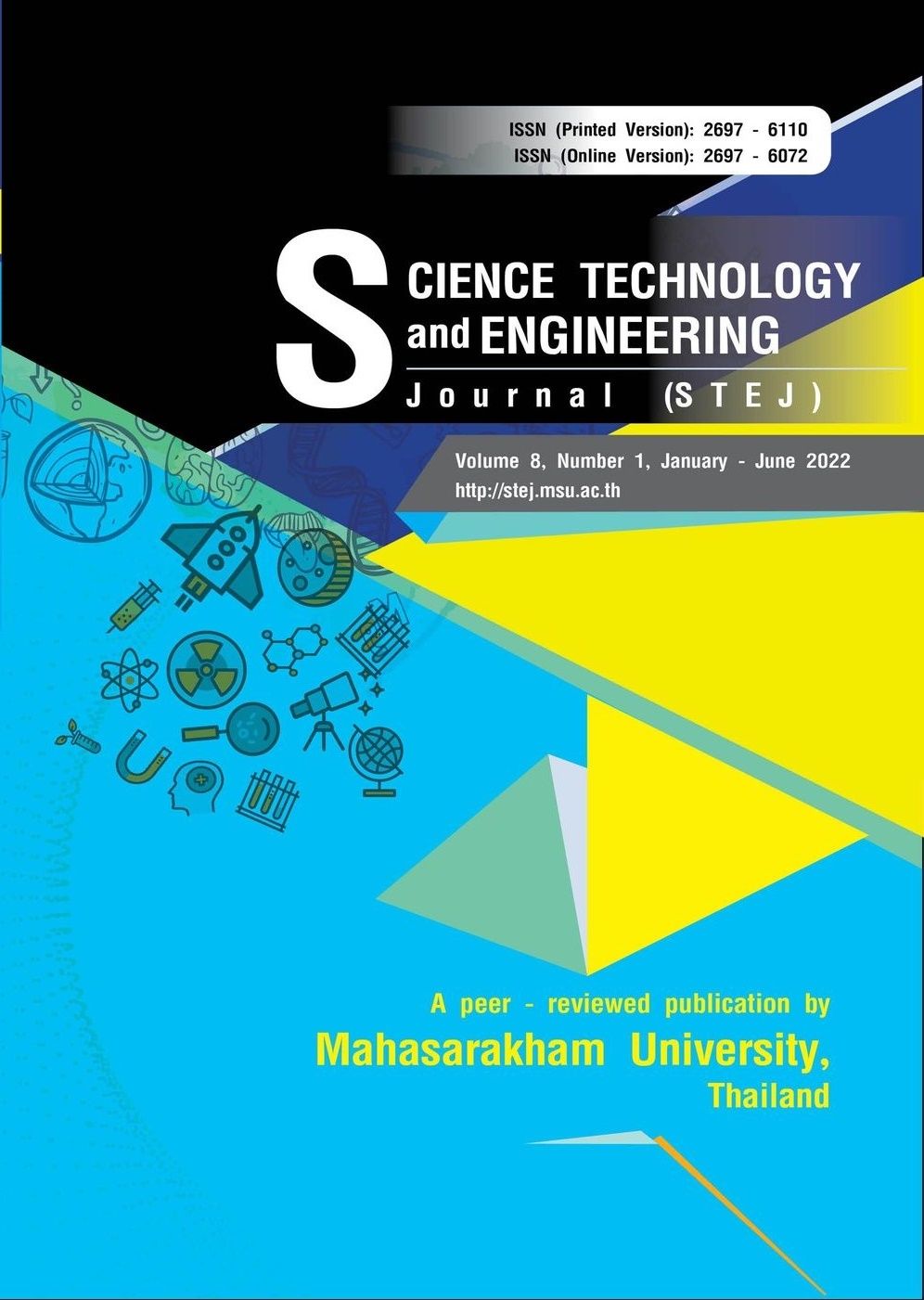Pigments from halophilic bacteria isolated from salty fermented foods, bioactivity and safety for further development as bio/natural-food additives
Keywords:
Halophilic bacteria, bacterial pigment, carotenoid profiles, safety analysisAbstract
Pigments producing strains Halobacillus yeomjeoni (81-1) Salinicoccus sp. (82-1) Bacillus infantis (63-11) Bacillus amyloliquefaciens (60-5) and Staphylococcus carnosus (48-10) were isolated from salty fermented foods. As per FTIR analysis, IR spectrum of pigment from each isolate were similar to IR spectrum of xanthophyll as previously reported. This study concluded that the pigments generated from these different halophilic strains with different color shade were all derivatives of carotenoid. Dominant bacterial pigments of these strains analyzed by High-Performance Liquid Chromatography (HPLC) compared to standard reagent included lycopene, lutein and β-carotene. Antimicrobial assays of crude pigment extract of 81-1 isolate exhibited highest inhibitory effect on Staphylococcus aureus, while 82-1 and 60-5 isolates best inhibited Escherichia coli and Bacillus cereus, respectively. DPPH assay of 60-5 isolate demonstrated significantly higher antioxidant activity as compared to others crude pigments. Furthermore, virulence analysis of strains depicted no key biogenic amine genes and no hemolytic activity in any of the isolates.
References
Bartley, G. E., & Scolnik, P. A. (1995). Plant carotenoids: pigments for photoprotection, visual attraction, and human health. Plant Cell, 7(7), 1027-38.
Bernheimer, A., & Avigad, L. S. (1970). Nature and properties of a cytolytic agent produced by Bacillus subtilis. Microbiology, 61, 361-369.
Braca, A., De Tommasi, N., Di Bari, L., Pizza, C., Politi, M. & Morelli, I. (2001). Antioxidant principles from Bauhinia tarapotensis. J Nat Prod, 64(7), 892-5. doi: 10.1021/ np0100845.
Cai, D., Liu, M., Wei, X., Li, X., Q. Wang, Z., Nomura, C.T., & Chen, S. (2017). Use of Bacillus amyloliquefaciens HZ-12 for high-level production of the blood glucose lowering compound, 1- deoxynojirimycin (DNJ), and nutraceutical enriched soybeans via fermentation. Applied Biochemistry and Biotechnology, 181(3), 1108-1122.
Chhetri, V., Prakitchaiwattana, C., & Settachaimongkon, S. (2019). A potential protective culture; Halophilic Bacillus isolates with bacteriocin encoding gene against Staphylococcus aureus in salt added foods. Food Control, 104, 292-299.
Cooper, D.A. (2004). Carotenoids in health and disease: recent scientific e v a l u a t i o n s , r e s e a r c h recommendations and the consumer. The Journal of Nutrition, 134(1), 221S-224S.
Coton, M., Coton, E., Lucas, P., & Lonvausd, A. (2004). Identification of the gene encoding a putative tyrosine decarboxylase of Carnobacterium divergens 508. Development of molecular tools for the detection of tyramine-producing bacteria. Food Microbiology, 21, 125-130.
Det-udom, R., Settachaimongkon, S., Chancharoonpong, C. (2022). Factor affecting bacterial community dynamics and volatile metabolite profiles of Thai traditional salt fermented fish. Food Science and Technology International, 0(0), 1-9.
Dhere, D.D., & Dharmadhikari, S.M. (2017). Optimization of carotenoid production by paracoccus beibuensis isolated from lonar crater. International Journal of Science and Research, 6(1), 1230-1235.
Eom, J.S., Seo, B.Y., & Choi, H.S. (2015). Biogenic amine degradation by Bacillus species isolated from traditional fermented soybean food and detection of decarboxylaserelated genes. Journal of Microbiology and Biotechnology, 25, 1519-1527.
Fernández, M., Linares, D.M., Del río, B., Ladero, V., & Alvarez, M.A. (2007). HPLC quantification of biogenic amines in cheeses: correlation with PCR-detection of tyramineproducing microorganisms. Journal of Dairy Research, 74, 276-282.
Götz, F. (1990). Staphylococcus carnosus: a new host organism for gene cloning and protein production. Society for Applied Bacteriology Symposium Series, 19(1), 49S-53S.
Gueimonde, M., Sanchez, ´ B., G de Los Reyes-Gavilan, C., & Margolles, A. (2013). Antibiotic resistance in probiotic bacteria. Frontiers in Microbiology, 4, 202.https://doi. org/10.3389/fmicb.2013.00202
Han, G.H., Cho, T.Y., Yoo, M.S., Kim, C.S., Kim, J.M., Kim, H.A., Kim, M.O., Kim, S.C., Lee, S., & Ko, Y.S. (2007). Biogenic amines formation and content in fermented soybean paste (Cheonggukjang). Korean Journal of Food Science and Technology, 39, 541-545.
Hajare, R., Ray, A., Tharach, S., Mythili, C., Avadhani, M. N., & Immanuel Selvaraj, C. (2013). Extraction and quantification of antioxidant lutein from various plant sources. International Journal of Pharmaceutical Sciences Review and Research, 22(1), 152-157.
Joshi, M.N., Pandit, A.S., Sharma, A., Pandya, R.V., Saxena, A.K., & Bagatharia, S.B. (2013). Draft genome sequence of the halophilic bacterium halobacillus sp. strain BAB-2008. Genome Announcements, 1, E00222-E00212(2013)
Khaneja, R., Perez-Fons, L., Fakhry, S., Baccigalupi, L., Steiger, S., To, E., & Cutting, S.M. (2010). Carotenoids found in bacillus. Journal of Applied Microbiology, 108(6), 1889-1902. doi:10.1111/ j.1365-2672.2009.04590.x
Kong, K.W., Khoo, H.E., Prasad, K.N., Ismail, A., Tan, C.P., & Rajab, N.F. (2010). Revealing the power of the natural red pigment lycopene. Molecules, 15, 959-987.
Landrum, J.T. (2010). Carotenoids: physical, chemical, and biological functions and properties. CRC Press.
Mohana, D.C., Thippeswamy, S., & Abhishek, R.U. (2013). Antioxidant, antimicrobial, and ultravioletprotective properties of carotenoids isolated from Micrococcus spp. Radiation Protection and Environment, 36(4), 168-174.
Mukry, S.N., Ahmad, A., & Khan, S.A. (2010). Screening and partial characterization of hemolysins from Bacillus Sp. Pakistan Journal of Botany, 42(1), 463-472.
Namitha, K.K., & Negi, P.S. (2010). Chemistry and biotechnology of carotenoids. Crit Rev Food Science & Nutrition, 50(8), 728-760. doi: 10.1080/10408398.2010.499811
Nigam, P.S., & Luke, J.S. (2016). Food additives: production of microbial pigments and their antioxidant properties. Current Opinion in Food Science. 7, 93-100.
Pakdeeto, A., Tanasupawat, S., Thawai, C., Moonmangmee, S., Kudo, T., Itoh, T.J.I.j.o.s., & microbiology, e. (2007). Salinicoccus siamensis sp. nov., isolated from fermented shrimp paste in Thailand. International Journal of Systematic and Evolutionary Microbiology, 57(9), 2004-2008.
Pankaj, V.P., & Kumar, R. (2016). Microbial pigment as a potential natural colorant for contributing to mankind. Research Trends in Molecular Biology, 85-98.
Pariza, M.W., & Johnson, E.A. (2001). Evaluating the safety of microbial enzyme preparations used in food processing: update for a new century. Regulatory Toxicology and Pharmacology, 33, 173-186.
Ramachandran, H., Iqbal, M.A., & Amirul, A.A. (2014). Identification and characterization of the yellow pigment synthesized by Cupriavidus sp. USMAHM13. Applied Biochemistry and Biotechnology, 174(2), 461-470. doi:10.1007/ s12010-014-1080-2
Rodriguez-Amaya, D.B. (2001). A guide to carotenoid analysis in foods. ILSI Press. Rodriguez-Amaya, D.B., & Kimura M. (2004) . Harvest plus technical monograph (Series 2). International Food Policy Research Institute and International Center for Tropical Agriculture.
Savardi, M., Ferrari, A., & Signoroni, A. (2018). Automatic hemolysis identification on aligned dual-lighting images of cultured blood agar plates. Computer Methods and Programs in Biomedicine, 156, 13-24.
Siriamornpun, S., Kaisoon, O., & Meeso, N. (2012). Changes in colour, antioxidant activities and carotenoids (lycopene, β-carotene, lutein) of marigold flower (Tagetes erecta L.) resulting from different drying processes. Journal of Functional Foods, 4(4), 757-766. doi:10.1016/j. jff.2012.05.002
Tsao, R., Yang, R., Yang, J.C., Zhu, H., & Manolis, T. (2004). Separation of geometric isomers of native lutein diesters in marigold (Tagetes erecta L.) by high-performance liquid chromatography-mass spectrometry. Journal of chromatography A, 1045, 65-70.
Usman, H.M., Farouq, A.A., Baki, A.S., Abdulkadir, N., & Mustapha, G. (2018).Productionn and characterization of orange pigment produced by Halophilic bacterium Salinococcus roseus isolated from Abattoir soil. Journal of Microbiology and Experimentation, 6(6), 238-243.
Ventosa, A. (2015). Salinicoccus Bergey’s man. syst. archaea bact. John Wiley & Sons.
Yohannes, K., Wan, Z., Yu, Q., Li, H., Wei, X., Liu, Y., Wang, J., & Sun, B. (2020). Prebiotic, probiotic, antimicrobial, and functional food applications of Bacillus amyloliquefaciens. Journal of Agricultural and Food Chemistry, 68(50), 14709-14727.
Downloads
Published
How to Cite
Issue
Section
License
Copyright (c) 2022 Science Technology and Engineering Journal (STEJ)

This work is licensed under a Creative Commons Attribution-NoDerivatives 4.0 International License.







